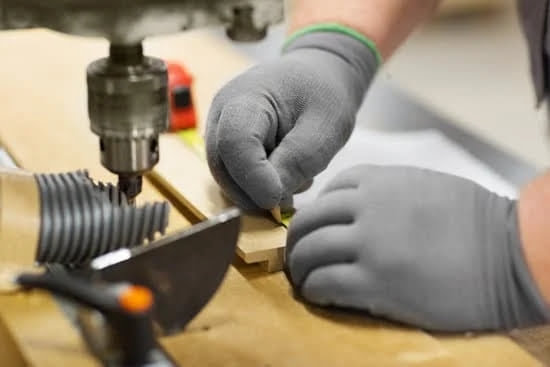Are you interested in learning how to make inlay woodworking? Inlay woodworking is a beautiful and intricate technique that involves inserting pieces of contrasting materials into a base wood to create decorative patterns, designs, and images. In this article, we will guide you through the process of creating stunning inlay woodworking projects, from choosing the right wood and tools to finishing and troubleshooting common issues.
Inlay woodworking requires precision, patience, and attention to detail, making it a challenging yet rewarding craft for woodworking enthusiasts. Whether you’re a beginner looking to learn a new skill or an experienced woodworker seeking to expand your repertoire, understanding the fundamentals of inlay woodworking is essential for creating impressive and professional-looking projects.
Throughout this article, we will provide you with practical tips and techniques for successfully incorporating inlays into your woodworking projects. From selecting the perfect wood for inlay work to designing intricate patterns and addressing common mistakes, you’ll gain valuable insights into the art of inlay woodworking. Join us as we delve into the world of inlay woodworking and explore the creative possibilities that this technique offers.
Choosing the Right Wood for Inlay Work
Wood selection is a crucial aspect of inlay woodworking, as the type of wood you choose can greatly affect the final outcome of your project. When selecting wood for inlay work, it’s important to consider factors such as color, grain pattern, and hardness.
Exotic woods like ebony, rosewood, and padauk are popular choices for inlay work due to their rich colors and unique grain patterns. These woods can create stunning contrasts and enhance the overall visual appeal of your woodworking project. On the other hand, softer woods like maple and cherry are easier to cut and work with, making them suitable for intricate designs.
It’s also important to ensure that the wood you choose is free from defects such as knots, cracks, or warping. These imperfections can negatively impact the quality of your inlay work. Additionally, consider the thickness of the wood as this will determine how deep you can cut into it when creating the recesses for your inlay pieces.
| Wood Selection Considerations | Importance |
|---|---|
| Color | Affects visual appeal and contrast |
| Grain Pattern | Contributes to overall design aesthetics |
| Hardness | Affects ease of cutting and working with the wood |
| Defects-Free Wood | Negative impact on quality of inlay work if present |
Essential Tools and Materials for Inlay Woodworking
Inlay woodworking requires a specific set of tools and materials to ensure the success of your project. From cutting and shaping to fitting and finishing, having the right equipment is essential for creating intricate designs and patterns. In this section, we will explore the essential tools and materials needed for inlay woodworking.
Tools
One of the most important tools for inlay woodworking is a sharp chisel. This will be used to carefully carve out the recessed areas where the inlay pieces will be placed. A small hammer or mallet is also necessary for gently tapping the inlay pieces into place. Additionally, a coping saw or fret saw will be needed to carefully cut out the shapes of the inlay pieces from different wood types.
Materials
When it comes to materials, selecting high-quality wood is crucial for inlay woodworking. Different types of wood can be used for creating contrasting effects and intricate designs. It’s important to invest in a variety of wood species with different colors and grain patterns to add complexity to your inlay work. Additionally, you will need adhesive such as wood glue or epoxy resin to secure the inlay pieces into place.
Safety Gear
In addition to tools and materials, it’s important to mention safety gear as an essential part of any woodworking project. Safety goggles, dust masks, and hearing protection should always be worn when working with power tools or hand tools. Proper ventilation and dust collection systems should also be considered when working with certain materials such as exotic woods or epoxy resin.
By having these essential tools, materials, and safety gear on hand, you’ll be well-prepared to tackle your inlay woodworking project with confidence.
Designing and Planning Your Inlay Woodworking Project
When it comes to making inlay woodworking, designing and planning are crucial steps in ensuring a successful and visually appealing project. Whether you’re working on a small jewelry box or a large furniture piece, having a well-thought-out design and plan will make the process smoother and more enjoyable.
Before diving into your inlay woodworking project, take some time to brainstorm and sketch out your design ideas. Consider the overall look and feel you want to achieve, as well as the specific patterns or motifs you want to incorporate into your piece. This is also the time to consider the type of wood you’ll be using for both the base and the inlay pieces, as different woods can create varying visual effects.
Once you have a clear vision for your project, it’s important to create a detailed plan that outlines the specific steps you’ll need to take to bring your design to life. This includes determining the size and placement of your inlay pieces, as well as any additional elements such as borders or accents. Having a solid plan in place will not only save you time but also help prevent mistakes during the construction phase.
As part of your planning process, consider how you’ll cut and fit the inlay pieces into the base wood. Will you be using hand tools or power tools? Understanding the intricacies of cutting and fitting inlay pieces is essential for achieving a professional-looking result. The next section will delve into this step-by-step process on how to make inlay woodworking seamlessly fit together with precision.
Step-by-Step Guide to Cutting and Fitting Inlay Pieces
Inlay woodworking involves the process of incorporating pieces of contrasting wood, shell, metal, or other materials into a base wood to create intricate designs. One of the key steps in this process is cutting and fitting the inlay pieces into the base material. This section will provide a step-by-step guide on how to achieve this with precision and accuracy.
Step 1: Measure and Mark
Before cutting any inlay pieces, it’s important to carefully measure and mark the area where the inlay will be placed. Use a pencil or a marking knife to create precise outlines for the inlay design. Take your time with this step to ensure that the measurements are accurate.
Step 2: Cutting the Inlay Pieces
Once you have marked out the design, carefully cut out the inlay pieces using a fine-toothed saw or a chisel, depending on the complexity of the design. It’s crucial to exercise patience and precision during this process to avoid any mistakes that could affect the final result.
Step 3: Fitting the Inlay Pieces
After cutting out the inlay pieces, test-fit them into their designated spaces on the base wood. Make any necessary adjustments by sanding or trimming until each piece fits perfectly without gaps. This part of the process requires attention to detail and may require some trial and error to achieve a seamless fit.
By following these steps, you can effectively cut and fit inlay pieces into your woodworking project with precision and accuracy. Remember that practice makes perfect, so don’t be discouraged if it takes some time to master this technique. With patience and dedication, you’ll be creating beautiful inlay designs in no time.
Creating Intricate Patterns and Designs in Your Inlay Woodworking
To create intricate patterns and designs in your inlay woodworking, start by drafting your design on paper. This will serve as your guide when cutting the inlay pieces. Consider the contrast between the wood you are using for the base and the inlay pieces – this will help make your design stand out.
When it comes to cutting the inlay pieces, accuracy is key. Use sharp chisels or carving knives to carefully cut out each piece according to your design. Take your time with this step to ensure that each piece fits perfectly into place.
In order to achieve a seamless look, pay attention to details like grain direction and color matching when fitting the inlay pieces into the wood. This will give your design a professional finish and showcase your craftsmanship.
| Task | Recommendation |
|---|---|
| Drafting Your Design | Start by drafting your design on paper as a guide |
| Cutting Inlay Pieces | Use sharp chisels or carving knives for accurate cuts |
| Fitting Inlay Pieces | Pay attention to details like grain direction and color matching |
Finishing and Polishing Your Inlay Woodworking Project
After completing the intricate process of cutting and fitting inlay pieces, the next step in creating a stunning inlay woodworking project is finishing and polishing. This final stage is crucial for bringing out the beauty of the wood and highlighting the precision of your inlay work. Here are some important steps to consider when finishing and polishing your inlay woodworking project:
- Sanding: Start by sanding the entire surface of your project to create a smooth and even finish. Use progressively finer grits of sandpaper to achieve a polished look.
- Staining: If you want to add color to your inlay woodworking project, consider using a wood stain that complements the natural colors of the wood you have chosen for your inlays.
- Sealing: Applying a sealant or top coat is important for protecting your inlay woodworking project from moisture, scratches, and other forms of damage. Choose a finish that is appropriate for the type of wood you are working with.
In addition to these basic steps, there are various techniques and products available for achieving different finishes on your inlay woodworking project. Whether you prefer a glossy, satin, or matte finish, it’s important to experiment with different methods until you achieve the desired result.
Finally, don’t forget to polish your finished inlay woodworking project to add an extra layer of shine and luster. Using a high-quality polishing compound and a soft cloth, carefully buff the surface of your project until it gleams. With patience and attention to detail, you can transform your inlay woodworking masterpiece into a true work of art.
Troubleshooting Common Issues and Mistakes in Inlay Woodworking
Dealing With Gaps and Loose Inlay Pieces
One common issue that woodworkers may encounter when working on an inlay project is gaps between the inlay pieces or loose-fitting pieces. This can be caused by a number of factors, such as improper cutting or fitting of the inlay pieces, or movement of the wood due to changes in temperature and humidity. To address this issue, it’s important to ensure that the inlay pieces are cut precisely to fit into the designated space.
Using a sharp chisel and carefully trimming the edges can help create a snug fit for the inlay pieces. Additionally, applying a small amount of wood glue before inserting the inlay can help secure it in place.
Avoiding Chip-Outs and Tear-Outs
Another common problem encountered when working on inlay woodworking projects is chip-outs or tear-outs, especially when cutting intricate patterns or designs. This can occur when using power tools like routers or chisels, or even when hand-sawing the wood.
To prevent chip-outs and tear-outs, it’s important to use sharp cutting tools and take your time when making cuts. If possible, practice on scrap pieces of wood before working on your actual project to get a feel for how the wood will react to different cutting techniques.
Maintaining Consistency in Depth and Thickness
Achieving consistent depth and thickness throughout an inlay woodworking project is crucial for a professional-looking finish. Inconsistencies can result in uneven surfaces and gaps between the inlay pieces.
One way to maintain consistency is by using depth stops on your power tools, such as routers, to ensure that all cuts are made at the same depth. Additionally, taking measurements and frequent checks during the cutting process can help identify any areas that may need adjustment to achieve uniformity across the entire project.
By addressing these common issues and taking proactive steps to avoid mistakes, you can elevate your inlay woodworking skills and produce high-quality finished pieces with clean lines, precise fits, and professional-looking designs.
Conclusion
In conclusion, inlay woodworking is a beautiful and intricate form of craftsmanship that adds a unique touch to any woodworking project. By following the essential steps outlined in this article, you can create stunning inlay designs that showcase your skills and creativity. From choosing the right wood to finishing and polishing your masterpiece, each step plays a crucial role in achieving a successful inlay woodworking project.
By understanding the importance of selecting the right wood for your inlay work, using essential tools and materials, and carefully planning and designing your project, you can ensure that your finished piece will be nothing short of a work of art. The step-by-step guide provided in this article gives you all the necessary information on how to make inlay woodworking come to life, allowing you to create intricate patterns and designs with ease.
Inlay woodworking may come with its fair share of challenges and mistakes, but by troubleshooting common issues along the way, you can overcome any obstacles and achieve the desired result. Once you have completed your masterpiece, don’t forget to showcase it proudly.
Whether it’s a decorative piece or part of a larger woodworking project, your finished inlay work will undoubtedly stand out as a testament to your dedication and skill in this timeless craft. So go ahead, pick up your tools, choose your wood, and start creating beautiful inlay designs today.
Frequently Asked Questions
How Are Wood Inlays Made?
Wood inlays are made by first cutting out the shape to be inlaid into a piece of wood. This is often done using a scroll saw or chisel. The inlay piece is then carefully fitted into the corresponding cavity in the main piece of wood.
How Do You Cut Wood for Inlays?
Cutting wood for inlays requires precision and skill. Typically, a scroll saw or sharp chisels are used to carefully cut out the design or shape from the chosen wood. This requires patience and attention to detail to ensure a perfect fit for the inlay.
What Is the Best Wood for Inlays?
The best wood for inlays depends on personal preference and the desired outcome. Generally, hardwoods like maple, ebony, rosewood, and walnut are popular choices due to their density and ability to hold intricate details.
These woods also create a beautiful contrast when placed against lighter woods like oak or ash. Ultimately, the best wood for inlays will depend on the specific project and desired aesthetic.

Hi everyone! I’m a woodworker and blogger, and this is my woodworking blog. In my blog, I share tips and tricks for woodworkers of all skill levels, as well as project ideas that you can try yourself.





